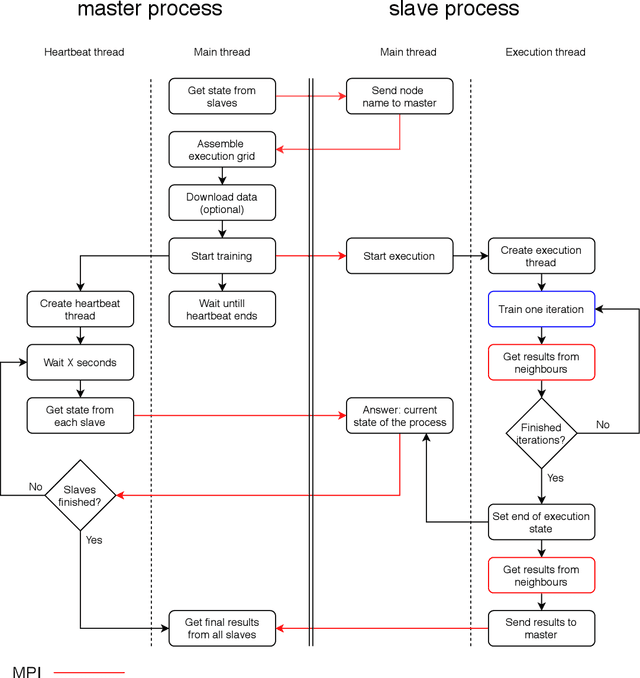Una-May O'Reily
Parallel/distributed implementation of cellular training for generative adversarial neural networks
Apr 10, 2020



Abstract:Generative adversarial networks (GANs) are widely used to learn generative models. GANs consist of two networks, a generator and a discriminator, that apply adversarial learning to optimize their parameters. This article presents a parallel/distributed implementation of a cellular competitive coevolutionary method to train two populations of GANs. A distributed memory parallel implementation is proposed for execution in high performance/supercomputing centers. Efficient results are reported on addressing the generation of handwritten digits (MNIST dataset samples). Moreover, the proposed implementation is able to reduce the training times and scale properly when considering different grid sizes for training.
Re-purposing Heterogeneous Generative Ensembles with Evolutionary Computation
Mar 30, 2020



Abstract:Generative Adversarial Networks (GANs) are popular tools for generative modeling. The dynamics of their adversarial learning give rise to convergence pathologies during training such as mode and discriminator collapse. In machine learning, ensembles of predictors demonstrate better results than a single predictor for many tasks. In this study, we apply two evolutionary algorithms (EAs) to create ensembles to re-purpose generative models, i.e., given a set of heterogeneous generators that were optimized for one objective (e.g., minimize Frechet Inception Distance), create ensembles of them for optimizing a different objective (e.g., maximize the diversity of the generated samples). The first method is restricted by the exact size of the ensemble and the second method only restricts the upper bound of the ensemble size. Experimental analysis on the MNIST image benchmark demonstrates that both EA ensembles creation methods can re-purpose the models, without reducing their original functionality. The EA-based demonstrate significantly better performance compared to other heuristic-based methods. When comparing both evolutionary, the one with only an upper size bound on the ensemble size is the best.
 Add to Chrome
Add to Chrome Add to Firefox
Add to Firefox Add to Edge
Add to Edge